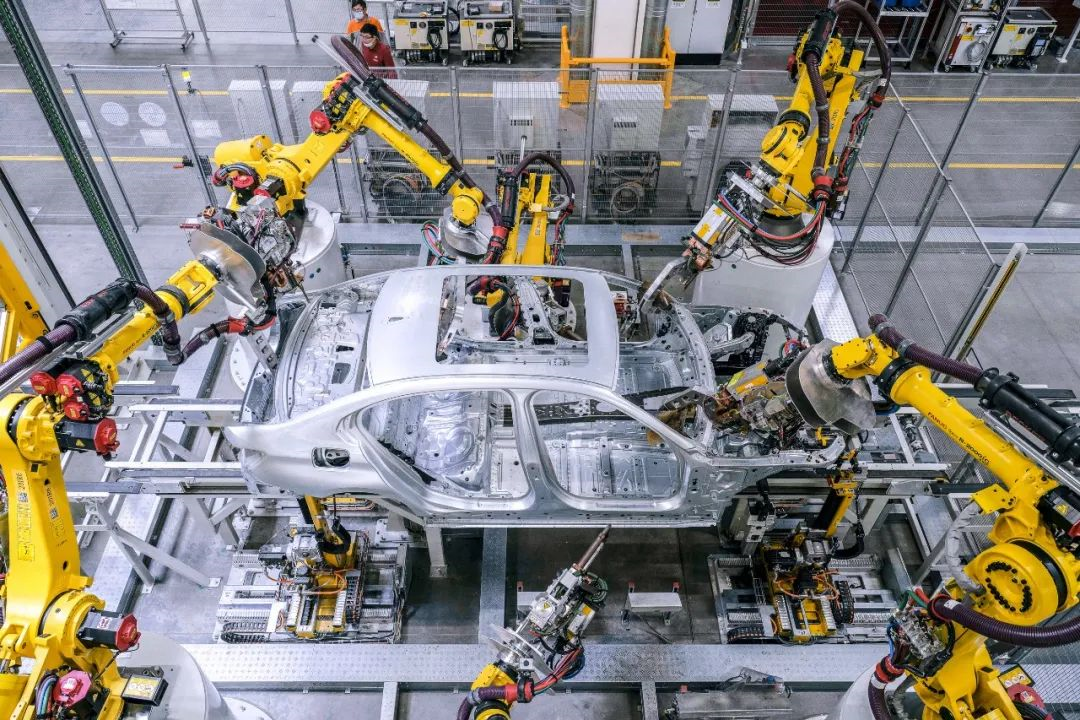Intelligent and Electric Trends Are Emerging, the Revolutionaries Rise Up
The pioneer is Tesla, which not only redefines its products but also revolutionizes production methods. Firstly, it pursues extreme automation, “using machines to produce machines”; then it employs integrated die-casting technology to significantly reduce the number of parts and pursue extremely fast assembly.
However, there is another logic of transformation: both current consumer mainstream fuel vehicles and future electric vehicles need to be considered.
BMW is a “both..and” innovator: not only did it launch the futuristic all-electric i3 in 2013, but it also plans to release a fully electric platform model in 2025.
Production processes must also follow suit. On June 23, BMW’s third plant in Shenyang, the Lida factory, opened. Here BMW produces both the petrol-powered 3 Series and i3 electric cars; it combines tradition with many “reform” changes such as a highly flexible production line that can quickly switch to 100% electric car production; green production practices using renewable energy power, conserving water and reducing consumption; Lean production, which reduced costs by 25% compared to 2019, and became highly agile allowing consumers to change configurations up to 6 days before delivery.
Can factories like this satisfy consumer demand? Can they cope with the challenge from revolutionary forces like Tesla? On June 27, media outlets like “Electric Car Observer” and senior executives from BMW’s production department, such as CEO Nordkovac, exchanged ideas.
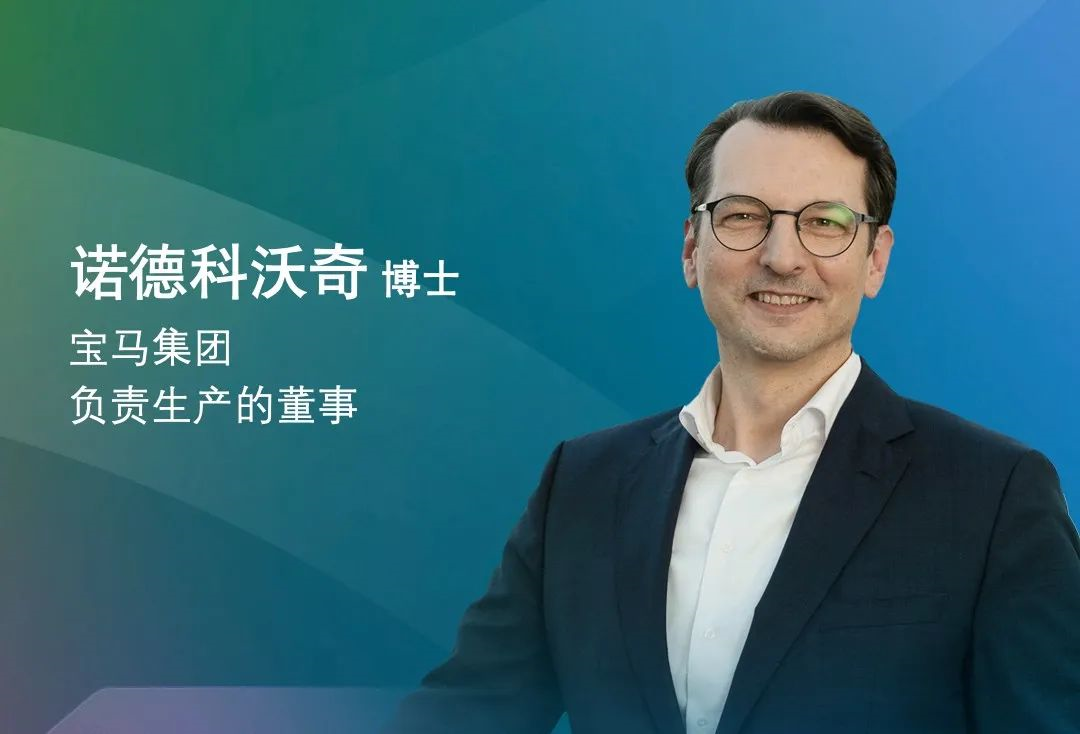
The Best Example of The Factory
Lida, phonetically named after Lidacun village, Dapan street, Tiexi District, Shenyang city, where the factory is located.
The Lida factory, adjacent to the Tiexi factory, was upgraded under the application of the Tiexi factory, covering 2.9 million square meters of land and equipped with four major production processes of stamping, body, painting, and final assembly.
BMW claims that after reaching its production capacity, the BMW Shenyang production base will increase to 830,000 vehicles.
For the Lida factory, BMW executives have nothing but praise. “The Lida factory is the best example of the BMW iFACTORY strategy,” says CEO Nordkovac, responsible for production.The so-called BMW iFACTORY strategy focuses on Lean Production, Green Production, and Digitalization, aiming to innovate new concepts of car production in response to the challenges of transitioning to electric travel.
How does the Dingolfing plant serve as the best example?
Lean Production: Reducing Costs by 25%
In the automotive industry, Lean Production was proposed by Toyota and widely adopted. Its outstanding feature is achieving just-in-time manufacturing on a large scale.
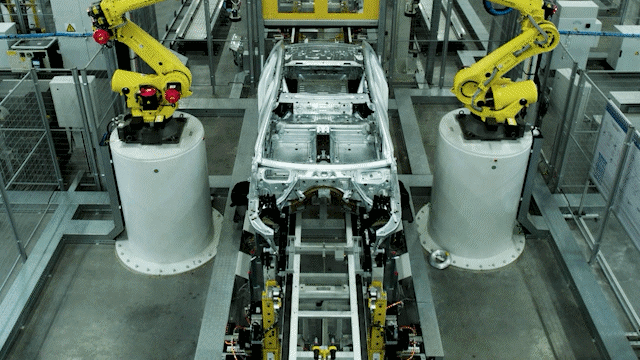
BMW’s concept of Lean Production is different, mainly reflected in three aspects: high flexibility, optimized processes, and excellent integration, which are also the focus of BMW iFACTORY.
The Shenyang production base is undoubtedly the best example of BMW’s highly flexible production. The Tiexi plant has brought 12 classic models in ten years. The Dadong plant can produce three types of propulsion: fuel, plug-in hybrid, and pure electric.
The Dingolfing plant also has extremely high production flexibility. The first car it produced was a pure electric i3, but it can also produce fuel cars of the 3 Series. It has a production system oriented towards electrification and can achieve a maximum of 100% electric vehicle production capacity.
“Why not build a factory specifically for producing electric vehicles?”
Norbert Reithofer responded, “Demand for electric vehicles is rising, but it still needs continuous growth in the next few years to become mainstream. Therefore, a production strategy based on flexibility should be formulated for the next ten years. This flexibility mainly manifests as being able to adjust between electric and internal combustion engine vehicles, in order to avoid idle production lines.”
“Building a factory specifically for electric vehicles and gradually increasing production over time makes no sense to us.”
He said that BMW developed new technologies and production processes based on pure electric vehicle models in 2013. The experience accumulated from it enabled BMW to produce two types of power vehicles in parallel on the same production line and have the ability to turn them into electric vehicles.
“From our perspective, this is a huge advantage that we have created, and we are now using it to transform towards electrification.”
Of course, the ultimate effect of Lean Production is reflected in efficiency. Norbert Reithofer introduced that the goal of iFACTORY is to reduce vehicle costs by 25% compared to 2019.
Green Production: 100% Renewable Energy
BMW believes that sustainability is also one of the connotations of luxury. Therefore, they regard green production as a strategic focus and plan to reduce the carbon emissions per vehicle in the production process by 80% compared to 2019 by 2030.# BMW iFACTORY Emphasizes Sustainability
BMW iFACTORY emphasizes the importance of sustainability, which includes resource conservation, energy savings, advanced technologies, and a circular economic model.
In China, the Shenyang production base has achieved 100% renewable energy power supply since 2019. The BMW Shenyang production base has a solar panel area of 290,000 square meters, ranking first in Liaoning Province. The expansion of the solar panel will continue in the future, and the expansion area of the Rieda factory will reach 120,000 square meters.
The Rieda factory also continues to improve its sustainability standards through new construction advantages. For example, the first natural gas-fired cogeneration system in Liaoning Province has been established. More energy-efficient electric servo welding guns are introduced in the body workshop, and many advanced processes are adopted in the painting workshop.
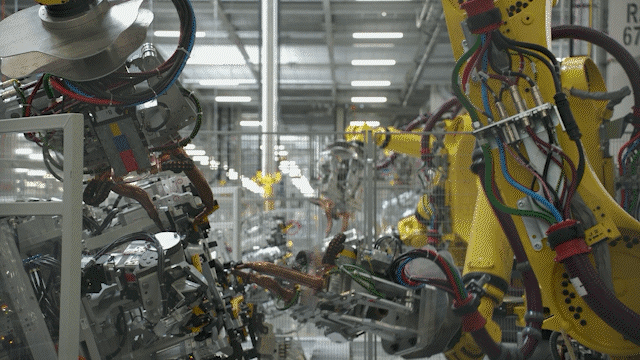
Digital Production: “Industrial Metaverse”
The Rieda factory is an “Industrial Metaverse” factory, which was designed and simulated entirely in the virtual space from the beginning, including factory layout, building design, production line planning, and equipment testing. The integration of the virtual world and the real world not only shortens the planning time but also realizes remote maintenance and real-time collaboration.
In addition, BMW also widely applies artificial intelligence (AI) technology in production to ensure that every BMW production is of high quality. For example, in Shenyang’s powertrain factory, an AI vision detection system, independently developed by the local team, was applied to the quality inspection of cylinder head. The system can identify tiny defects on the surface of the component with an accuracy rate of 99.7%. Currently, the Shenyang production base has implemented about 100 AI technology applications.
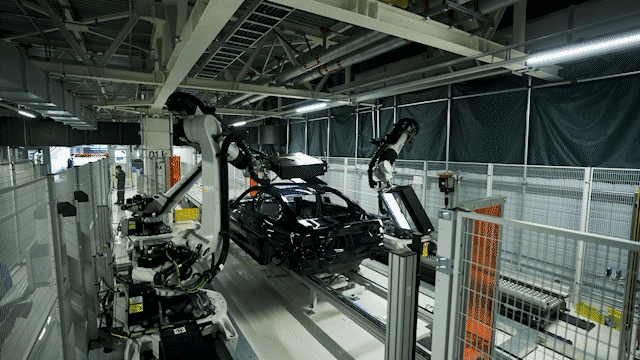
The Rieda factory has been regarded as the “best example” factory. How competitive is such a factory?
How to Deal with “Black Swan” and Tesla?
In the past two years, the global automotive industry has experienced several “black swans”:
The impact of the COVID-19 epidemic has caused massive production shutdowns. Even if car companies can close production, parts may not be supplied.
The shortage of chips and skyrocketing prices of battery materials have made it impossible to produce a car with a missing component.
Russia’s invasion of Ukraine has seriously affected the supply and price of commodities such as aluminum…
In the past, the BMW Group has coped well. In 2021, while the entire industry reduced production, BMW delivered 2.52 million vehicles worldwide, an increase of 8.4% year-on-year, and won the global luxury brand sales champion.However, the chip shortage has not yet significantly improved, and the supply of power battery materials cannot be quickly increased due to the surge in demand. Car companies will continue to face supply uncertainties. How does BMW respond?
According to Nordqvist, the production flexibility that BMW has established and demonstrated over the past few decades is BMW’s core competitiveness. “We can increase production capacity in a short period of time; change the production order; and adjust production capacity among multiple factories. This helps us to cope with these changes.”
He said, “We can react to configuration changes within six days before the production of a car begins, and develop new schedule plans. All of this helps us to deal with external turbulent environmental factors.”
When asked by the media about how BMW deals with the production of technologically advanced cars that young consumers like, Nordqvist responded that production follows the product. BMW’s products are highly technological, always at the forefront of technology, and lead the way for the future, which is very attractive to the market and consumers.
For the production department, it is important to keep up with the technological development of all products, on the one hand to be able to produce these high-tech cars, on the other hand, to meet the individualized needs of every consumer. “Therefore, our luxury production concept is still valid, and with the arrival of more technology in the future, it will still be valid. This capability is difficult for other car companies to replicate.”
When it comes to the application of new car technology and the production of new cars, Tesla is an unavoidable topic. The speed of 45 seconds per car produced by Tesla has shocked the industry.
Nordqvist emphasized once again that production must follow the product. Tesla and BMW have different production philosophies, but because they have different product lines.
Tesla sets up factories based on a few models and a small range of optional space. But this is not the logic of BMW factories.
“As a luxury car manufacturer, every car model is different, and we want to give every consumer the best car. So, our method is different from car manufacturers with few car models. In the past, we have developed our own method to set the production schedule and achieve the correct production capacity.”
He said that efficiency is key, but the speed of the production line is not the measure of efficiency. BMW’s efficiency is more reflected in the pursuit of line balance. “Our goal is to maximize the use of equipment, and to have line balance approach 100%, which only pure electric production lines have with the power battery assembly station shown in the picture.”
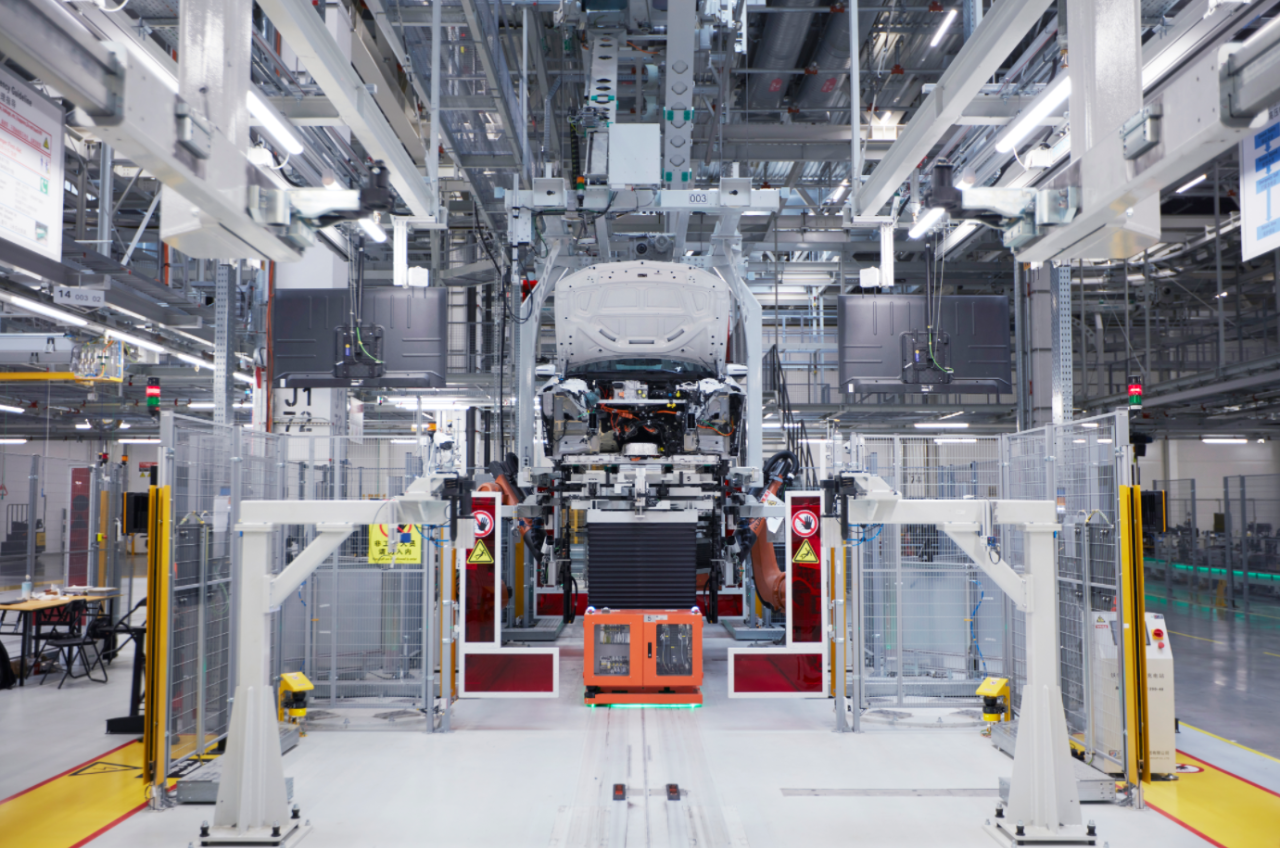 # Betting on China
# Betting on China
BMW has been investing in China and Shenyang for a long time, with a total investment of 83 billion yuan. The newly opened Lida factory, with a total investment of 15 billion yuan, is the largest single investment in BMW’s history in China.
Recently, BMW’s actions in China have been frequent. Mr. Joly Gao, President and CEO of BMW Group Greater China, said: “Within just three months, the product upgrade project of our Dadong factory was put into operation, the Lida factory was officially opened, and two new domestic models were launched – the brand-new BMW X5 and the brand-new BMW i3. This shows that ‘BMW Group, Home in China’ is not only a promise, but also a practical and sustained investment.”
In 2021, BMW Brilliance Automotive (BBA) produced over 700,000 vehicles, becoming the leader among luxury car companies. With the gradual increase in production capacity of the Lida factory, BBA’s annual production capacity will increase to 830,000 vehicles, further driving local employment and the development and upgrade of high-end manufacturing industry clusters. In the past four years, BBA has created 6,000 new jobs in Shenyang, and the total number of personnel in BMW Group institutions in China has exceeded 28,000.
The opening of the Lida factory is also an important step for BMW Group to accelerate its transformation to electrification. In 2022, BMW Group will offer Chinese customers five pure electric vehicle models, including the BMW iX3, i3, i4, iX, and i7. By 2023, BMW Group’s pure electric products in China will increase to 13 models.
Apparently, for BMW, expanding the production capacity of its manufacturing base in China and delivering products to the world is also an important strategic move in the electrification transformation. This is also Tesla’s strategy. However, Tesla is radical, while BMW is gradual.
Investing in New Technologies
Nordqvist agrees with the integrated die-casting technology used by Tesla. He said that BMW is also developing its own new material and process technologies. On the “New Generation” products that will be marketed in 2025 with a pure electric architecture, BMW will introduce aluminum alloy chassis and add new elements to optimize the production process.
In addition, Tesla’s Shanghai Super Factory claims to achieve 100% local parts supply. Nordqvist responded that in 2021, BMW Brilliance had 436 suppliers in China, and local procurement increased by 30% to reach 71 billion yuan. “I think this data proves our commitment to the Chinese automotive supply chain as a company.”
In any case, in BMW’s view, whether it is a black swan or Tesla, BMW’s flexible and luxurious production methods are still effective. With the deepening of electrification and the increasingly rapid development of technology, BMW’s production methods are also gradually evolving, without seeking shortcuts.
This article is a translation by ChatGPT of a Chinese report from 42HOW. If you have any questions about it, please email bd@42how.com.
